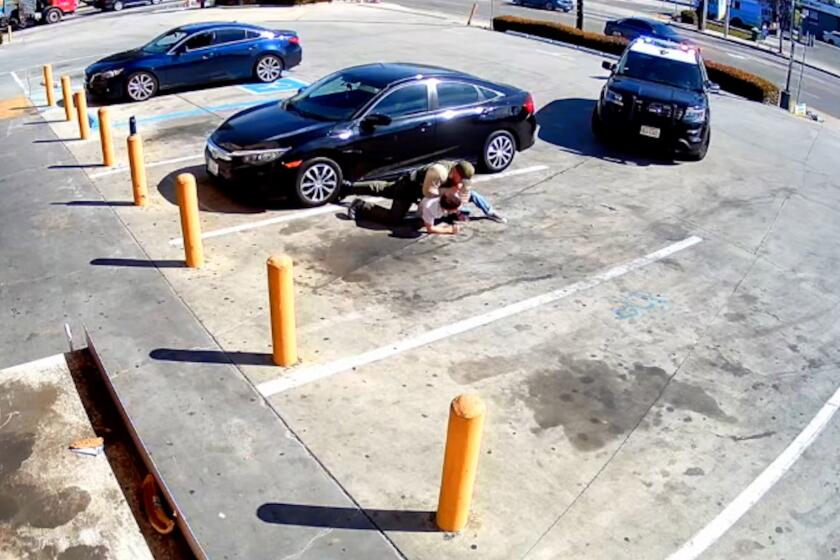Commission to Consider Options for Dealing With Dump Problem
Last year, trucks loaded with two million tons of garbage chugged their way along winding canyon roads to one of two landfills in north Orange County, and the giant dumps are now nearly full. The Santiago Canyon landfill east of Orange will reach its capacity next year, and the Olinda Canyon dump in Brea will by 1994.
The county Planning Commission will hold a public hearing on Tuesday to consider 10 options for dealing with the landfill crisis for the area bounded by Beach Boulevard, the Garden Grove Freeway and the eastern county line. Among the proposals are expanding the Olinda landfill and building a new dump in one of the large vacant canyons on the eastern fringes of the county.
“Orange County is at a crossroads in its long-term planning for the future needs of its citizens,” according to a landfill study commissioned by the Board of Supervisors in 1985 and completed by planning consultants with Michael Brandman Associates.
“Unlike the past, where after a landfill had filled up it was a simple matter to locate another undeveloped area and build another landfill, these 10 sites proposed for the next generation landfill may be the last 10 large viable disposal sites remaining in north Orange County.”
The study recommends that the Olinda landfill be expanded to allow for another 27 years’ use and also that the county buy land in at least one vacant canyon to be used for several hundred years’ worth of garbage.
At a meeting last week, however, the county Waste Management Commission recommended that further environmental studies be authorized for three sites: Olinda Canyon, West Fremont Canyon and Gypsum Canyon. Although Gypsum has already been named as the likely spot for a new county jail, environmental planners say the canyon is big enough for both a jail and a landfill.
The proposal to expand the Olinda landfill is likely to draw fire from Brea residents, who are not eager to see more trash brought into their area.
Norma Hicks, a former Brea city councilwoman and a member of the Waste Management Commission, protested the recommendation to expand Olinda, contending that creating a 690-acre landfill there would involve destroying the ridge between the Olinda and Olinda-Alpha canyons.
“To me, it’s the same as saying, ‘Since the McColl dump (in Fullerton) has hazardous wastes in it, then let’s make it the hazardous waste site,’ ” she said.
No Council Position
Brea City Manager Frank Benest said that although the Olinda landfill expansion is a major issue in the community, the City Council has not yet taken a position on it.
“We all see the trucks going through town,” he said. “We all can look up and see the side of the mountain is open to the landfill.” Benest said the county should be prepared to work with Brea to ease the traffic, noise and air pollution problems that would result from an expansion.
As it stands, the Olinda landfill is likely to end up with 80% of the amount of garbage now being hauled to Santiago Canyon when that landfill closes next year.
The county would have to spend about $36 million to acquire the land to expand the Olinda landfill. That, according to the study, would be the cheapest of the landfill alternatives. The other advantages for that alternative, according to the study, are that hauling routes are already established and county agencies are already familiar with the facility.
The drawbacks are that the expansion would only take care of north Orange County for another 27 years and would delay by 30 years a plan to convert the landfill into a regional park.
Environmental Concerns
In terms of land use, according to the report, the 1,930-acre West Fremont Canyon would be a compatible choice that could contain north Orange County’s trash for 185 years. However, it would cost the county about $118 million to acquire the land and build the dump, and there are environmental concerns associated with destroying vegetation and wildlife in the area.
Gypsum Canyon has even more drawbacks, the report says. Acquiring the land and building a dump there would cost $200 million, and putting a dump next to a jail could pose health problems for inmates and employees. Another environmental concern is that geological studies show that there are artesian wells in the lower reaches of the canyon that are linked to ground water that could become polluted by landfill trash.
In addition, part of the proposed eastern transportation corridor runs through the canyon, therefore limiting the size and choice of location for a landfill. If the entire canyon was made available for a dump, however, it would take nearly 600 years to fill it.
The consultants’ report also considers alternatives such as recycling, composting, trash-to-energy conversion plants and taking wastes to a remote site outside the county.
While such alternatives hold promise, the study says, “these technologies are not a panacea for the present and foreseeable landfill capacity problem confronting north Orange County.”
The Planning Commission meeting will begin at 2 p.m. in the Planning Commission Hearing Room in the Administration Building of the county office complex in Santa Ana. The Board of Supervisors is scheduled to consider the landfill issue in a meeting on Aug. 16.
More to Read
Sign up for Essential California
The most important California stories and recommendations in your inbox every morning.
You may occasionally receive promotional content from the Los Angeles Times.










